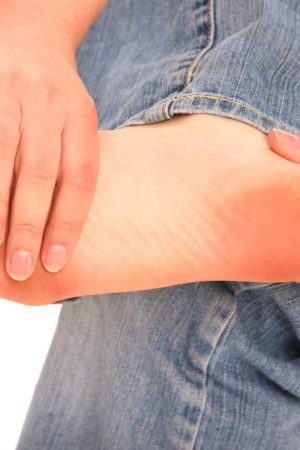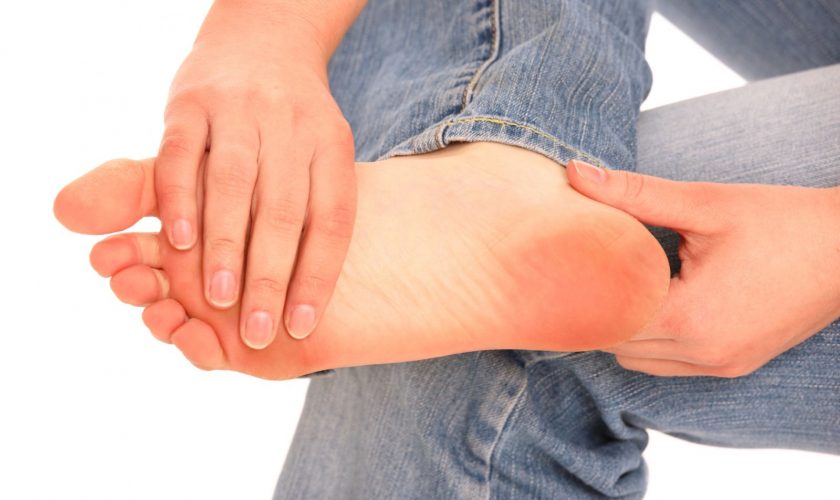Corns and calluses can be annoying, but your body actually forms them to protect sensitive skin. Corns and calluses are often confused with one another.
Corns generally occur at pressure points, typically the bottom of the feet and the sides of toes. They can be painful.
A hard corn is a small patch of thickened, dead skin with a central core. A soft corn has a much thinner surface and usually occurs between the 4th and 5th toes. A seed corn is a tiny, discrete callous that can be very tender if it’s on a weight-bearing part of the foot. Seed corns tend to occur on the bottom of the feet, and some doctors believe this condition is caused by plugged sweat ducts.
Calluses are thickenings of the outermost layer of the skin and are painless. They can develop on hands, feet, or anywhere there is repeated friction — even on a violinist’s chin. Like corns, calluses have several variants. The common callus usually occurs when there’s been a lot of rubbing against the hands or feet. A plantar callus is found on the bottom of the foot.
Symptoms
Corns and calluses are
- hardened, thick areas of skin;
- rounded or conical and may appear as a bump on the skin;
- dry, scaly, or flaky; and
- painful, leading to foot pain if they interfere with walking or other activity. Calluses are typically painless.
Causes
The small bones of the toes and feet are broader and lumpier near to the small joints of the toes. If there is extra rubbing (friction) or pressure on the skin overlying a small rough area of bone, this will cause the skin to thicken. This may lead to corns or calluses forming.
The common causes of rubbing and pressure are tight or poorly fitting shoes which tend to cause corns on the top of the toes and side of the little toe. Also, too much walking or running which tends to cause calluses on the sole of the feet. So if you do sports or activities that involve repeated pressure on your feet then this will increase your risk of developing a callus.
Corns and calluses are more likely to develop if you have very prominent bony toes, thin skin, or any deformities of the toes or feet which cause the skin to rub more easily inside shoes. People with bunions are more likely to develop corns and calluses.
Treatment
Corns and calluses can be treated with many types of medicated products to chemically pare down the thickened, dead skin. Many products are available for use as home remedies. These products all share the same active ingredient — salicylic acid, the ingredient used in over-the-counter wart-removal products.
Salicylic acid is a keratolytic, which means it dissolves the protein (keratin) that makes up most of both the corn and the thick layer of dead skin which often tops it. Used as indicated on the package directions, these products are gentle and safe for most people. Salicylic-acid treatments are available in different forms including
- applicators,
- drops,
- pads,
All of these treatments will turn the top of the skin white and allow the dead tissue to be trimmed or peeled away, making the corn protrude and hurt less.
It generally is recommended that salicylic acid not be used by people with diabetes or when there is frail skin or poor circulation (because of concern about how the skin can heal). In these situations, application of salicylic acid can potentially lead to ulcer formation on the skin. A health care professional can help determine whether salicylic acid-based products are safe for use on a particular individual.
Do not attempt to cut or shave away corns and calluses at home. This can lead to potentially dangerous infection of the surrounding tissues. This should be performed by a podiatrist or other health care professional.
A health care professional may also prescribe antibiotics for any corns or calluses that have become infected.
Remedies
If your hands or feet suffer with corns or calluses, the right oil or glove could make all the difference. Here are some natural home remedies to make corns and calluses disappear.
Castor Oil and Apple Cider Vinegar
Fill a basin with hot, soapy water, then add a cup of apple cider vinegar before soaking your feet in the water for at least 15 minutes. Calluses should be softened enough to be filed with a pumice stone. For corns, dab some castor oil on after soaking your feet. Corns should peel away after about 10 days of the treatment.
Lemon
Before going to sleep, cut a slice of lemon peel about an inch long and the width of your toe. Place the pith over the corn, securing with a bandage and covering with a white cotton sock overnight. Continue each night until the corn disappears.
Bread
Soak a half a slice of stale bread in apple cider vinegar and secure it to the affected part of your foot with adhesive tape. Wrap with plastic wrap and slip on a cotton sock. Your corn or callus should disappear by morning.
Epsom Salts
For calluses, toss a handful of Epsom salts into a basin of warm water, then soak feet for about 10 minutes. Once the dead skin has softened, use a callus file or pumice stone to rub off the top layers. Continue grind the callus down a bit each day after a bath or shower. It might take a few weeks, but trying to remove the whole thing at once will make the callus worse if you grind too deep.
Pumice Stone
Massaging the corn and the nearby area with a pumice stone is an effective remedy. A pumice stone will remove dead, hardened skin, in turn reducing pain and speeding up the recovery time.
White Vinegar
White vinegar is another excellent tried and tested remedy for corns on the feet. The high acidity level of white vinegar helps soften the hard skin. Plus, its antifungal and antibacterial properties reduce the risk of infection.
Turpentine Oil
Turpentine oil is a strong antiseptic that can help treat corns. The oil penetrates into the skin quickly, so the healing time may be faster.
Papaya
Papaya is another very easy and effective remedy for removing foot corns. There are several enzymes in papaya that will help slough off hard and dead skin. Plus, papaya can ease any pain or discomfort and even help the corn dry up and fall off faster.
Pineapple
You can also clear off corns with pineapple. For treating corns, pineapple peel is more effective than the flesh. The peel contains certain enzymes that help soften the corns.



